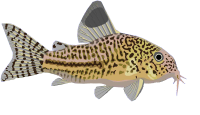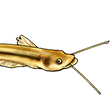They spawned in the large tube from a tank siphon tube that measured 1.75 x 8 inches covered with a piece of slate, some oak leaves, and rounded stones on either side.
I've read Shane's breeding article a few times. That's where I found the info about the tube dimensions - thanks, Shane! I've read in Shane's article that they are challenging to raise. Has anyone successfully raised these fry besides Shane? I'm trying to give them the best possible conditions to ensure a breeding success. TIA!




